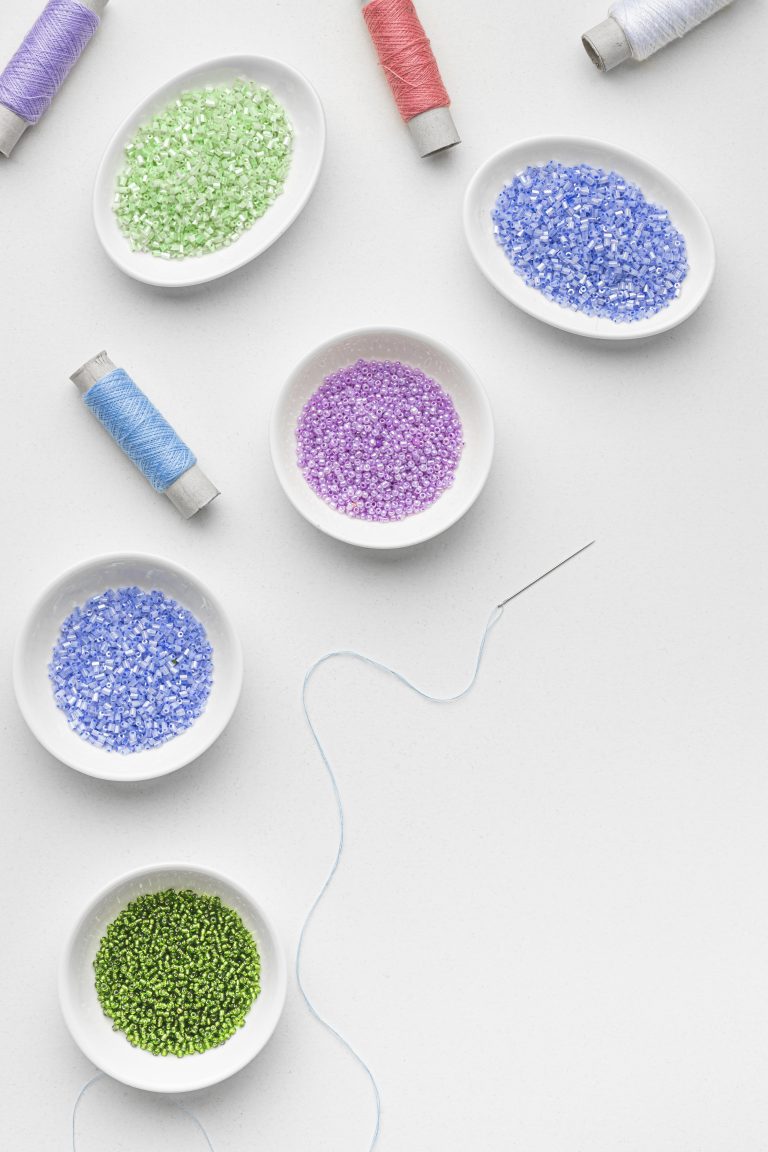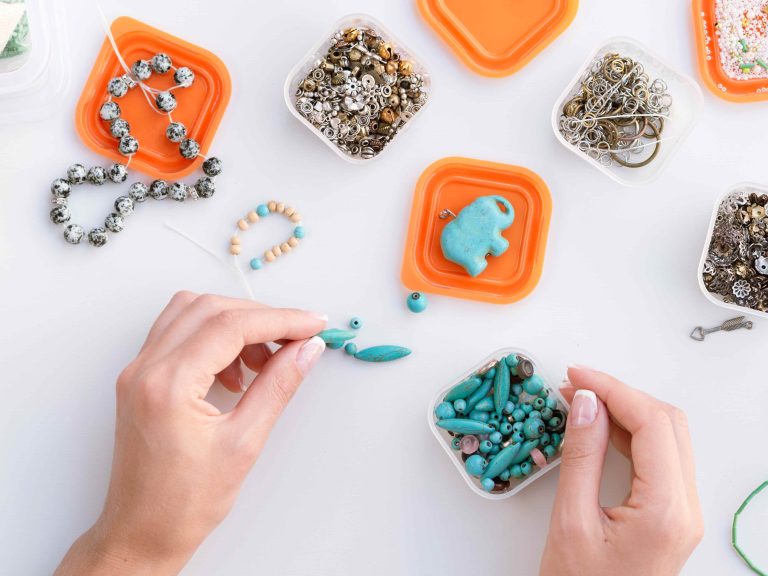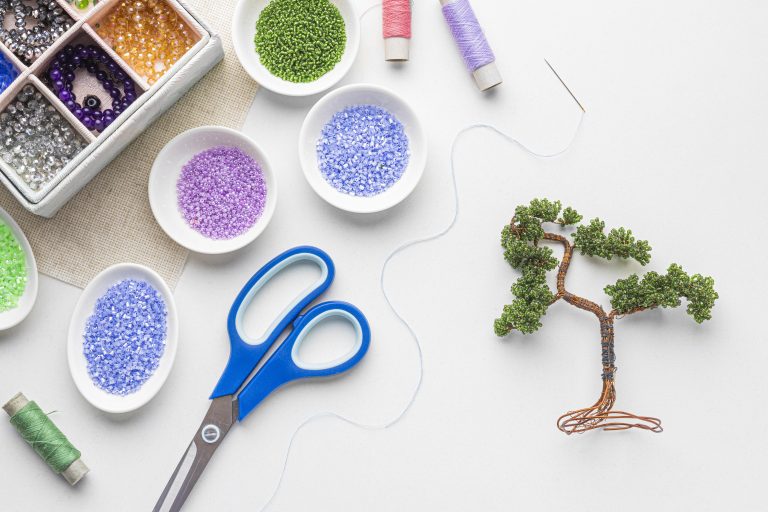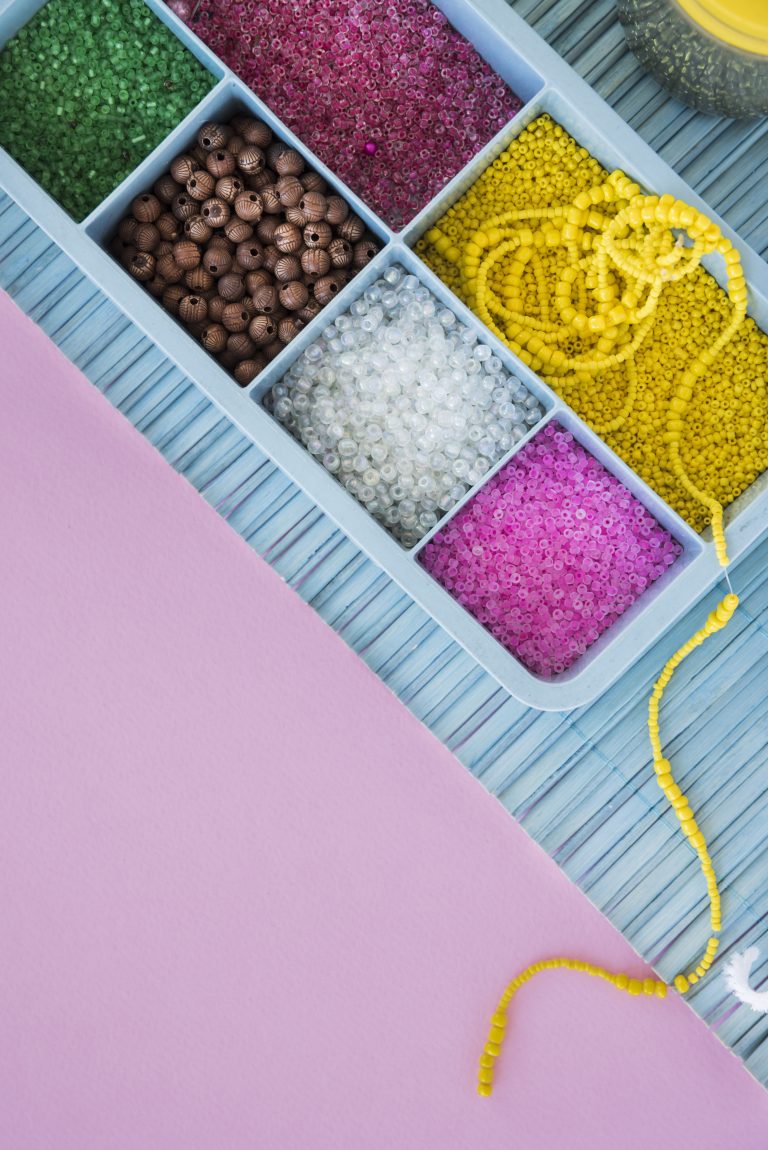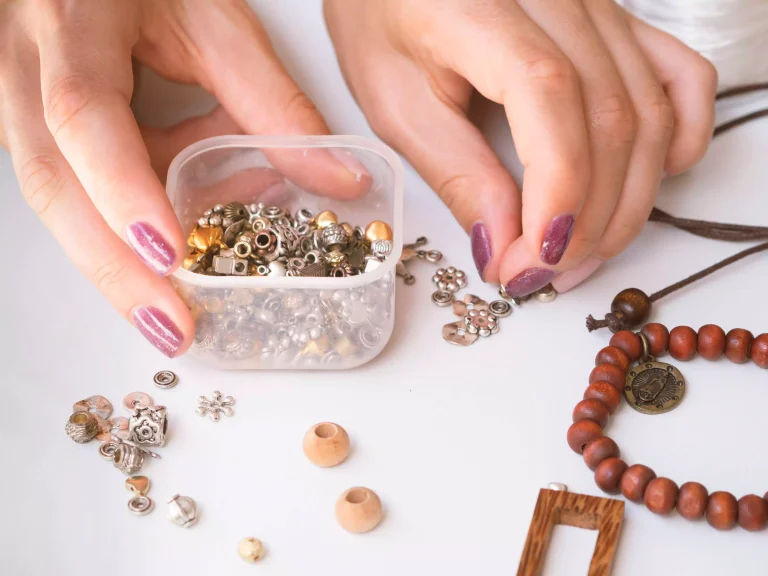Introduction
The world is shifting towards more eco-friendly practices, and jewelry-making is no exception. Sustainable jewelry is not only kinder to the planet but also adds an extra layer of beauty to each piece. Seed bead jewelry, known for its intricate designs and versatility, is a perfect medium for sustainable creativity. In this article, we’ll explore various methods to make beautiful seed bead jewelry while minimizing environmental impact.
1. Understanding the Basics of Seed Bead Jewelry
What Are Seed Beads?
Seed beads are small, round beads that come in a variety of colors and sizes, often used to create intricate patterns. Traditionally made from glass, these tiny beads have found their way into various forms of jewelry, including bracelets, earrings, necklaces, and rings.
History and Popularity of Seed Bead Jewelry
Seed bead jewelry has a rich history, with roots tracing back to Indigenous cultures and ancient civilizations. These tiny beads continue to be popular today due to their versatility and ability to create stunningly detailed designs.
2. Why Choose Sustainable Jewelry-Making?
Environmental Impact of Conventional Jewelry-Making
The jewelry industry often relies on materials like plastic and synthetic chemicals, which can be harmful to the environment. Choosing sustainable methods helps reduce waste, conserve natural resources, and promote ethical practices.
Benefits of Sustainable Choices for the Environment and Personal Health
Sustainable jewelry-making is healthier for both the maker and the wearer. By avoiding toxic chemicals, artists can create pieces that are safe to work with and wear, making sustainable jewelry a more appealing choice.
3. Choosing Eco-Friendly Materials for Seed Bead Jewelry
Sustainable Bead Materials
Using glass beads instead of plastic ones is one way to make eco-friendly choices. Glass is more durable, recyclable, and less harmful to the environment than plastic.
Glass Beads vs. Plastic Beads
While plastic beads are lightweight and inexpensive, they’re not biodegradable and can contribute to pollution. Glass beads, however, are eco-friendly and can be made from recycled glass, providing a sustainable option for seed bead jewelry.
Natural vs. Synthetic Beads
Natural materials like clay, wood, or bone are biodegradable and often sourced from renewable resources, making them a better choice for sustainable jewelry-making.
Alternative Thread Options
Choosing organic cotton, hemp, or bamboo thread can help reduce the environmental impact. These natural fibers are biodegradable and sourced sustainably, unlike synthetic threads.
4. Sourcing Ethical and Recycled Materials
Where to Find Recycled Beads
Recycled beads are available from eco-conscious suppliers and online marketplaces. Look for sellers who specialize in upcycled or second-hand jewelry components.
Supporting Ethical and Small-Scale Bead Producers
Buying from small, ethical producers not only supports fair wages and better working conditions but also promotes the use of sustainable practices.
Tips for Choosing Suppliers
Choose suppliers who prioritize eco-friendly materials, transparency, and ethical labor practices. Look for certifications or labels indicating fair trade or eco-friendliness.
5. Sustainable Tools and Equipment
Durable Tools for Long-Term Use
Investing in high-quality tools minimizes waste, as durable tools will last longer and reduce the need for replacements. This approach aligns well with sustainable practices by encouraging responsible use.
Reusable and Biodegradable Tool Alternatives
Some jewelry tools, like certain pliers, can be made from recyclable metals or materials with biodegradable handles, reducing their environmental footprint.
6. Techniques for Creating Eco-Friendly Seed Bead Jewelry
Handcrafted Methods to Reduce Waste
Handcrafting each piece of jewelry helps reduce waste by allowing for greater control over materials and designs.
Upcycling and Repurposing Old Jewelry
Transforming old, broken jewelry into new pieces is a creative way to practice sustainability. This technique saves resources and gives new life to unused items.
7. Reducing Waste in Jewelry-Making
Minimizing Bead Waste
Planning designs carefully helps minimize bead waste. Consider working with smaller quantities of beads at a time to avoid excess.
Reusing and Recycling Bead Scraps
Small bead scraps and leftover materials can often be reused for other projects or recycled. Many jewelry makers keep a bead “scrap jar” for this purpose.
Managing Thread and Wire Waste
Using just the right amount of thread or wire for each project reduces waste. Collect any extra and store it for future use in small projects.
8. Energy-Efficient Practices in Crafting
Reducing Power Use in Your Workspace
Using energy-efficient lights and unplugging tools when not in use helps conserve energy in your workspace.
Benefits of Natural Lighting
Working in natural light not only saves energy but also provides a more comfortable crafting environment. Set up your workspace near a window if possible.
9. Non-Toxic and Natural Finishes for Jewelry
Alternatives to Harmful Chemical Sealants
Opt for natural waxes or plant-based sealants instead of conventional, chemical-laden products. They protect the jewelry without harmful effects.
Eco-Friendly Paints and Finishes
Many eco-friendly paints and varnishes are available on the market today, making it easier to add color to jewelry without using harsh chemicals.
10. Packaging Seed Bead Jewelry Sustainably
Using Recycled or Reusable Packaging
Opt for recycled paper boxes, cotton bags, or biodegradable materials instead of plastic packaging.
Eco-Friendly Branding and Tags
Consider using tags made from recycled materials, and avoid single-use plastic in branding elements. Natural inks or dyes for printing can add a unique touch.
Sustainable Shipping Options
Look for shipping companies that offer carbon-neutral services or prioritize sustainable packaging.
11. Caring for and Maintaining Sustainable Seed Bead Jewelry
How to Extend the Life of Bead Jewelry
Proper care, such as keeping pieces dry and storing them carefully, can help prolong the life of bead jewelry.
Repair and Maintenance Tips
Encourage your customers to bring their pieces back for repairs or provide tips for self-repair. This practice reduces waste and enhances the longevity of each piece.
12. Marketing and Selling Sustainable Seed Bead Jewelry
How to Emphasize Sustainability in Marketing
Highlight your eco-friendly practices in your marketing materials. This approach attracts environmentally-conscious customers who appreciate your efforts.
Educating Customers on Eco-Friendly Jewelry
Help customers understand the importance of sustainable jewelry, from the materials to the crafting methods.
13. The Benefits of Building a Sustainable Jewelry Brand
Building Trust with Conscious Consumers
Consumers are increasingly looking to support brands with sustainable values. Being transparent about your practices builds trust and loyalty.
Long-Term Benefits of Eco-Friendly Business Practices
Sustainable practices lead to long-term savings by reducing waste, improving efficiency, and enhancing customer satisfaction.
14. Success Stories: Sustainable Jewelry-Making Brands
Examples of Brands Leading in Eco-Friendly Jewelry
Explore a few brands that are at the forefront of eco-friendly jewelry-making and their strategies for success.
**
What We Can Learn from Their Practices**
These examples provide inspiration for sustainable practices that can be adapted to any jewelry business.
15. Conclusion and Future of Sustainable Seed Bead Jewelry
Sustainable seed bead jewelry combines beauty with eco-friendly practices. By choosing sustainable materials, minimizing waste, and marketing ethically, jewelry makers can create beautiful pieces with minimal environmental impact. The future of jewelry lies in the hands of those willing to innovate and prioritize the planet.
FAQs
Q1: What materials are best for sustainable seed bead jewelry?
A1: Glass and natural materials like clay, wood, or bone are ideal for sustainable jewelry, as they are eco-friendly and recyclable.
Q2: Where can I find recycled beads for my projects?
A2: Look for online marketplaces specializing in eco-conscious or upcycled jewelry components, as well as local thrift stores.
Q3: How can I reduce waste in my jewelry-making process?
A3: Plan designs carefully, reuse scraps, and save leftover beads for smaller projects to minimize waste.
Q4: Are there eco-friendly finishes available for jewelry?
A4: Yes, plant-based sealants and natural waxes are great alternatives to chemical-based finishes.
Q5: How can I market my jewelry as sustainable?
A5: Highlight your use of eco-friendly materials and ethical practices in your branding, and educate your customers on the benefits of sustainable jewelry.

